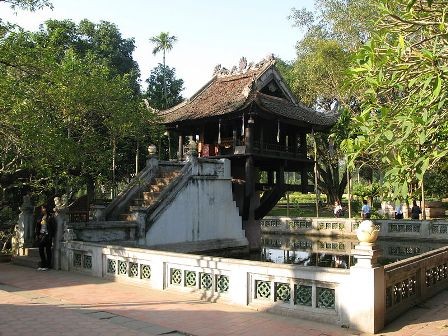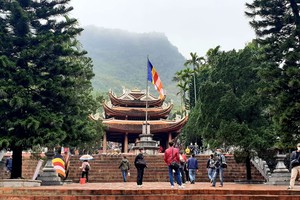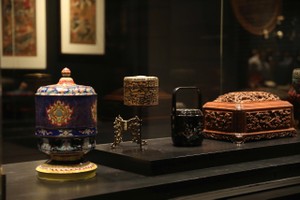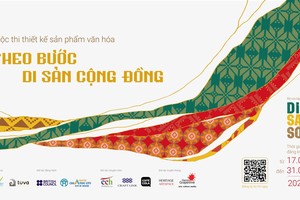The One-Pillar Pagoda in Hanoi has been named as one of the most unique works of architecture on the continent, in the Asia Book of Records.

This was announced by the Indian office and details of the ancient One-Pillar Pagoda were submitted by the Vietnam Book of Records or Vietkings.
According to ‘Dai Viet Su Ky Toan Thu’ (Complete History of Great Viet), the pagoda was built in the winter of 1049 under the reign of King Ly Thai Tong.
Legend has it that King Ly Thai Tong, who had no children, used to go to various pagodas to pray to Buddha to bless him with a son. One night he dreamt that he met Bodhisattva Avalokiteshvara, the Goddess of Mercy, sitting on a great lotus flower in a square-shaped pond and was handed a baby boy by her.
Months later, when the Queen gave birth to a boy, the King was advised by a monk to erect a pillar in the middle of a lotus pond, similar to the one he had seen in his dream, in honour of the Goddess of Mercy.
Monk Thien Tue advised the King to build a pagoda and a lotus-shaped tower, just as he had seen in his dream. When the pagoda was finally complete, monks went around the pagoda reciting Buddhist chants for longevity for the King. For this reason, the pagoda is also called ‘Dien Huu’ (longevity in happiness and good luck).
During the Ly Dynasty, the pagoda was used as a sacred site to hold an annual royal ceremony to celebrate the birthday of Lord Buddha.
Over the years, the ancient pagoda has been restored several times. The present pagoda was rebuilt in 1955. The present wood pagoda is in the shape of a square with a curved roof. The lotus-shaped tower has a length of three meters with dragons around the Buddhist statue. The tower balances on a stone pillar approximately 4 meters high (excluding the underground section) and 1.2 meters in diameter.
The temple is built of wood on a single concrete pillar 1.25 meters in diameter. It is designed to resemble a lotus blossom, which is the Buddhist symbol of purity, as a lotus blossoms in a muddy pond.
The pagoda structure also shows the harmonious combination of imagination and unique architecture with a system of wood beams that create a firm structure and add beauty to the pagoda.
For its architectural and historical value, the pagoda was classified as a historical relic in 1962, and in 2006, it was recorded in the Vietnamese Guinness Book as the most unique architecture in Vietnam.
























